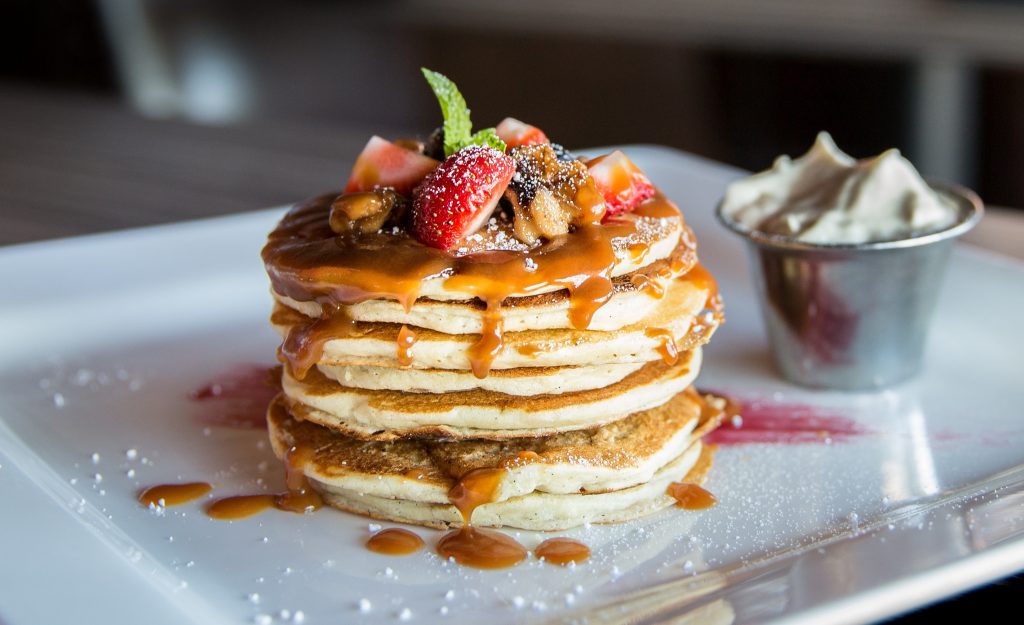
Whether you have your pancakes with chocolate spread, honey, or the classic lemon and sugar, I think we can all agree that Pancake Day is one of the best celebrations of the year. If you want to continue happily tucking into your classic British pancakes, then go ahead, nobody will blame you, but how about, this year, you do something a bit different and bring some international culture into proceedings.
Let’s begin with the well-known French crêpe. Now I personally don’t think you’ve done France right if you haven’t tried a Nutella crêpe which, in my experience, is a life-changing favour sensation that will ruin British pancakes for you forever. These wafer-thin, golden-brown beauties can be enjoyed hot or cold and be filled with anything your heart desires. If you want to elevate your pancake game, French crêpes are a surefire way to do so.
Going a bit further afield, these spring onion favoured Chinese pancakes make the perfect appetiser. They have bags of flavour and a gorgeous flaky texture, making them incredibly moreish. The recipe is complex and requires a reasonable amount of technical skill compared to generic British pancakes, but go on, give it a go; you might discover a new, fairly niche skill you never knew you had.
The unusually named pikelets are a fascinating creation. Essentially these are mini pancakes that are small and thick with a similar texture to American pancakes, filled with custard or cream. These little delights are a staple for children growing up in Australia and are usually enjoyed as a snack or served for afternoon tea. Top with whipped cream for a perfect mid-afternoon indulgence.
I don’t know about you, but in terms of sweet treats, I know the Danes for their delicious pastries, so I’m certainly intrigued by their pancake alternative, which looks more like a small, custard-filled doughnut to me. Literally translated as “apple slices” (although most modern recipes don’t seem to include apples), these Aebleskiver are cooked at a very high heat in special pans with circular hollows. They have a light and fluffy texture, almost like a cross between a pancake and a Yorkshire pudding and are enjoyed sprinkled with sugar and served with jam for dipping- my mouth is watering at the thought.
If you have never tried an American pancake, well, sit down, my friend; you’re in for a treat. These fluffy, thick delights are more cake-like in texture and often eaten for breakfast with butter and maple syrup. If you, like me, find that one or two crêpe-style pancakes simply aren’t enough to satisfy your Shrove Tuesday cravings, then perhaps a stack of these more filling sweet treats is the way to go. Give them a go and experiment with the toppings- for me, fruit and yoghurt are perfect for a weekend breakfast treat.
Dosa, also known as dosai, dosey or dosha, is a thin, crisp pancake from South India made from a fermented batter of ground black lentils and rice. The fermentation process gives it a slightly tangy, savoury taste that pairs nicely with various curries. These pancakes take a bit of effort but are a perfect side or main dish if stuffed with Aloo masala or any other filling your heart desires.
I wouldn’t be surprised to hear that you had heard of arepas before; these thick savoury pancakes are becoming increasingly popular at British street food markets, including London’s Maltby Street and Camden Lock. Arepas are made with ground maize and have a mild corn flavour, making them the ideal vehicle for flavourful fillings, often including things like black beans, chicken, avocado and plantain. In Columbia, these tasty additions are used as a topping to their crunchy arepas, whereas in Venezuela, arepas are split open and stuffed with these fillings to create a more sandwich-like snack.
Anjero is a staple of Somalian cuisine, used for both sweeter breakfast dishes and savoury main meals. This fermented pancake has a bread-like texture and is traditionally made of only three ingredients: maize, flour, and water. This simple pancake can also be seen in Ethiopia with the injera, which, although made using the same ingredients, has its own character and is much bigger and more sour than the injera. This difference in taste can be attributed to the length of fermentation, which is overnight for the anjero and a couple of days for the injera. Amusingly, Somalians seem to have a British approach to their tea drinking as most people eat an average of three anjeros with a cup of tea, something I can relate to as I can often be found scoffing half a packet of digestives with my morning cuppa.
If you want to add an extra splash of history to your pancake day, I recommend trying Greek Tiganites, supposedly the first documented pancake in the world, dating back to the sixth century B.C. If you want to be traditional, top these light and fluffy pancakes with chopped walnuts, but feel free to experiment with sweet and savoury additions. Apparently, Greek people tend to go for familiar toppings like chocolate spread, or they push the boat out and use what we would imagine as typically more Greek flavours like feta and honey, which I could really get behind.
To finish our culinary journey, we will end in Italy with the farinata, a thin, unleavened pancake made from chickpea flour and cooked in a wood-fired oven. The farinata is made with just three ingredients and is known for its crispy outside and creamy interior. This simple snack is sold in bakeries all over Italy and is given flavour with the addition of rosemary and sea salt. Although this recipe originated in Italy, it can now be found elsewhere in countries along the Mediterranean, with slightly different herbs and spices giving it local character.








